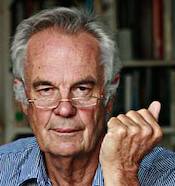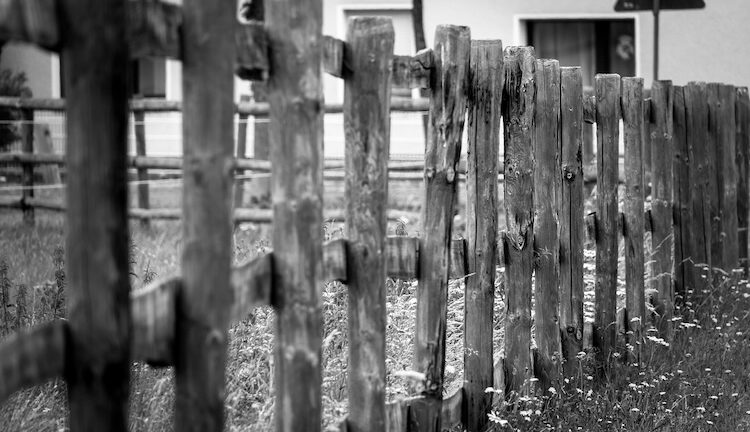By Jonathan Power*
LUND, Sweden | 13 November 2025 (IDN) — At first, I was a bit surprised when a friend told me that the English admonition, “Good fences make for good neighbours”, exists in many other languages. I shouldn’t have been taken aback. A moment’s reflection should have told me that dividing people with fences and walls has been going on for millennia.

There’s nothing particularly new about the fence between the US and Mexico, the Cold War wall between East and West Germany, or the one between Israel and the Palestinian West Bank. Look at the Great Wall of China.
The Mexicans have a joke about the planned wall to replace the fence: “It’s not built to keep Mexicans out of the US; it’s built to keep Donald Trump out of Mexico!”
As a concept, border “walls” predate both President Joseph Biden and President Donald Trump. Every recent US president has built or enhanced portions of the border barrier, including 128 miles constructed during the Obama administration.
These barriers, experts note, have had little long-term impact on the migration flows that ultimately determine the number of migrants arriving at the US-Mexico border.
In fact, contrary to popular European opinion, the number of illegal immigrants has dropped sharply — a 21% drop since last year, and 52% since 2023. The Economist reported in September: “Though MAGA (Make America Great Again) accuses Europe of not policing its borders, it has in fact built a big, invisible wall around its frontiers.”
In the UK, media attention has focused on the illegals crossing the English Channel in unsafe boats. In fact, these are a small percentage of total immigration. This media coverage has pushed British voters sharply to the right (including the BBC).
Mexico’s Approach
Today, the Mexicans have a problem with the migrant “caravans,” made up of fleeing Central Americans who, from time to time, pour into the south of Mexico, where there is no fence.
The Mexicans have reacted much more sensibly and humanely to the America-bound caravan than Trump. They have encouraged the “caravaners” to go no further and find work in Mexico’s underdeveloped southern states. Those applying for asylum have been offered temporary work permits, effective immediately.
The Mexicans know from their history that development is the cure for migration. Thanks to economic growth, the Mexican exodus to America has been reduced to a trickle. Trump doesn’t talk about this. He goes on using the Mexicans as a scapegoat for a phenomenon that no longer exists. In his first election campaign, he said, “They’re bringing crime. They’re rapists.” He says he hasn’t changed his mind.
Ever since the Kissinger Commission evaluated Central American needs at the end of the civil wars in 1984, there has been discussion about the need for the US to provide significant aid to help these countries overcome poverty. But not much has been forthcoming. When it does arrive, it often produces sterling results.
I once visited a farm project in El Salvador, run by the UN’s International Fund for Agricultural Development, that was doing exceptionally well. (I wrote about it in an earlier column.) This type of aid is what Trump should focus on, but he has now effectively eliminated it.
Fences in Asia and Europe
Often, fences and walls tell a story.
On India’s frontier with Bangladesh is the longest border fence in the world — 2,500 miles of it. It was built primarily to stem the exodus of poorer Bangladeshis to better-off India. However, now rapidly developing Bangladesh is richer per capita than India, and the wall is becoming an anachronism.
India has another fence — the 340-mile-long barrier along the disputed Line of Control inside Kashmir, a region both India and Pakistan claim as their territory.
Western Europe, belatedly, has joined the fence-builders. The Syrian war migrant crisis of 2015 prompted a wave of nationalism, particularly in Eastern Europe. Rather than agree to burden-sharing — which would have given each EU country only a modest number of migrants — these countries preferred to say “no,” taking in barely a handful.
- Hungary built fences along its border with Serbia and Croatia.
- Slovenia erected a fence along its border with Croatia.
- Macedonia along its Greek border.
- Austria along its border crossings with Slovenia and Italy.
The fences ensured that Mediterranean countries where the refugees land have had to bear the heaviest load. Now that the Syrian migration has been reduced to a trickle, and African migration — except to Spain — has slowed dramatically, the fences remain.
Like Trump, right-wing politicians in Europe (including Brexit supporters in the UK) raise the spectre of endless migration. But it’s unlikely there will be more large-scale wars in the Middle East. Even the one remaining, Yemen, has produced few Europe-bound refugees. Despite the horror of the war in Gaza, few Palestinians fled to Europe, and many who left are trickling back.
The African stream is over-magnified. Observers point to Africa’s population increase and claim it must inevitably lead to more northward migration. But I wrote my first articles about this in 1973, and migration has remained modest, even when Africa’s population growth rate was much higher than it is now.
In fact, some of Africa is doing rather well — a growth rate of over 4% a year for Sub-Saharan Africa, with five countries among the world’s fastest-growing economies (according to last month’s International Monetary Fund report).
There’s still time to help Africa develop more rapidly and turn it into another Mexico, where people prefer to stay at home because there are jobs available.
Integration, Not Walls
As for migrants who do make it to Europe, most Western governments, too belatedly, are beginning to realise that their policy of multiculturalism has not worked. It has led to ghettoisation. For immigration to have fewer adverse effects, it has to involve carefully planned integration.
Fences and walls are not necessary. Mostly, they are manifestations of superficial thinking.
Note: Two years ago, I wrote a novel, “The Human Flow”. It is set in West Africa and tells a triangular love story about three journalists who embark on a journey across the Sahara to document the migration to Europe. (Published by Ibidem and Columbia University Press.)
*Jonathan Power has been an international foreign affairs columnist for over 40 years and a columnist and commentator for the International Herald Tribune (now The New York Times) for 17 years. [IDN-InDepthNews]
Copyright: Jonathan Power

